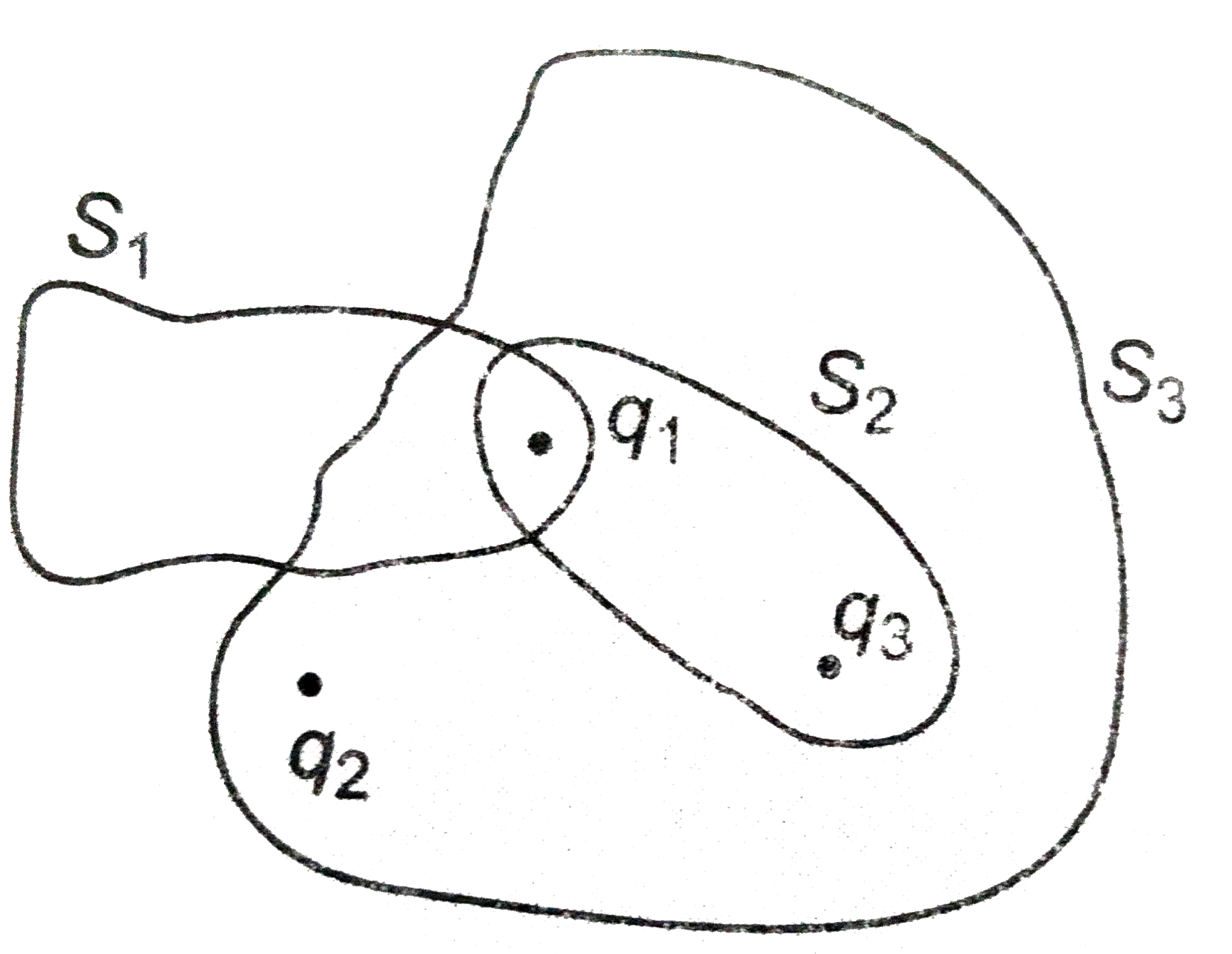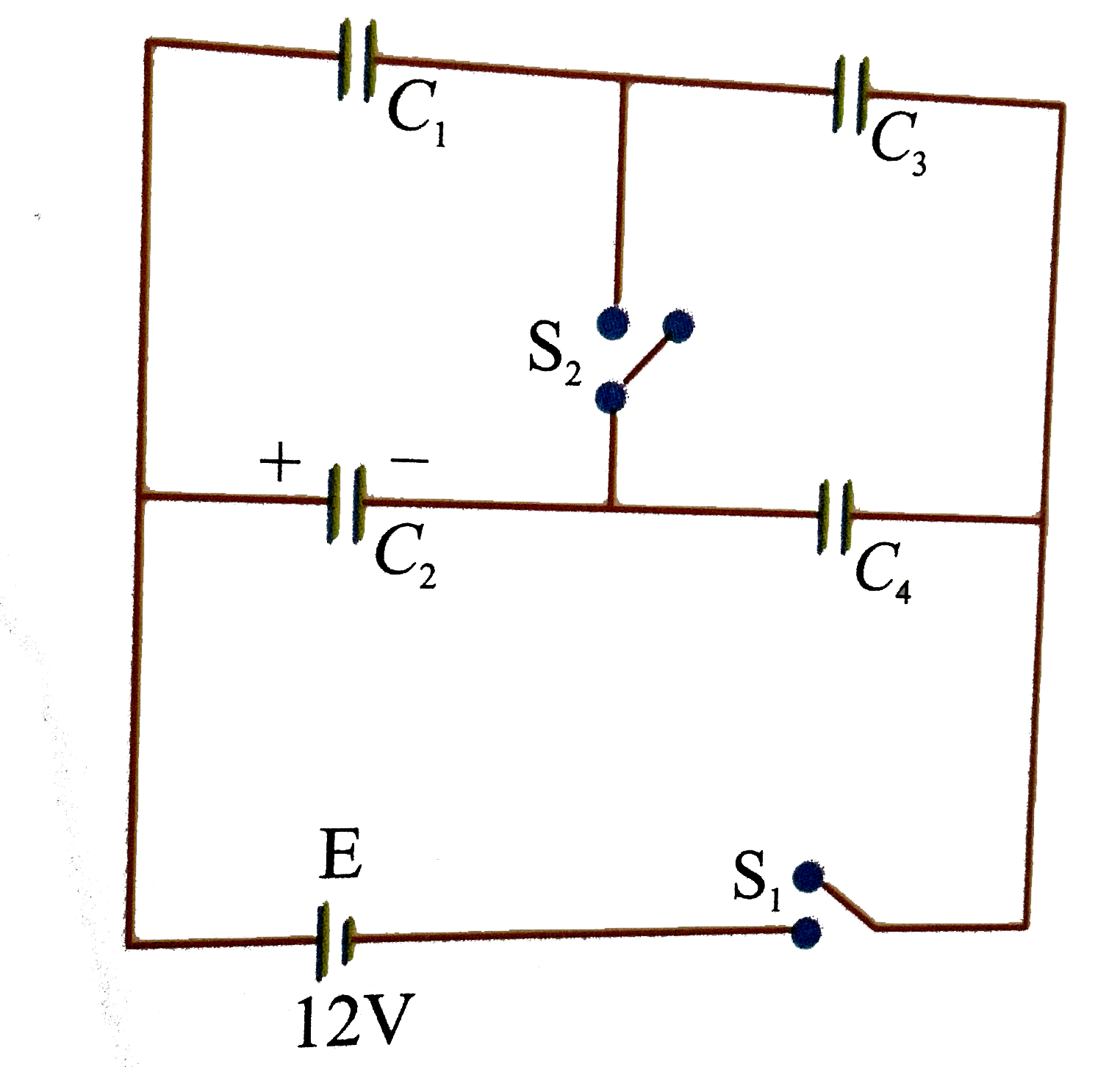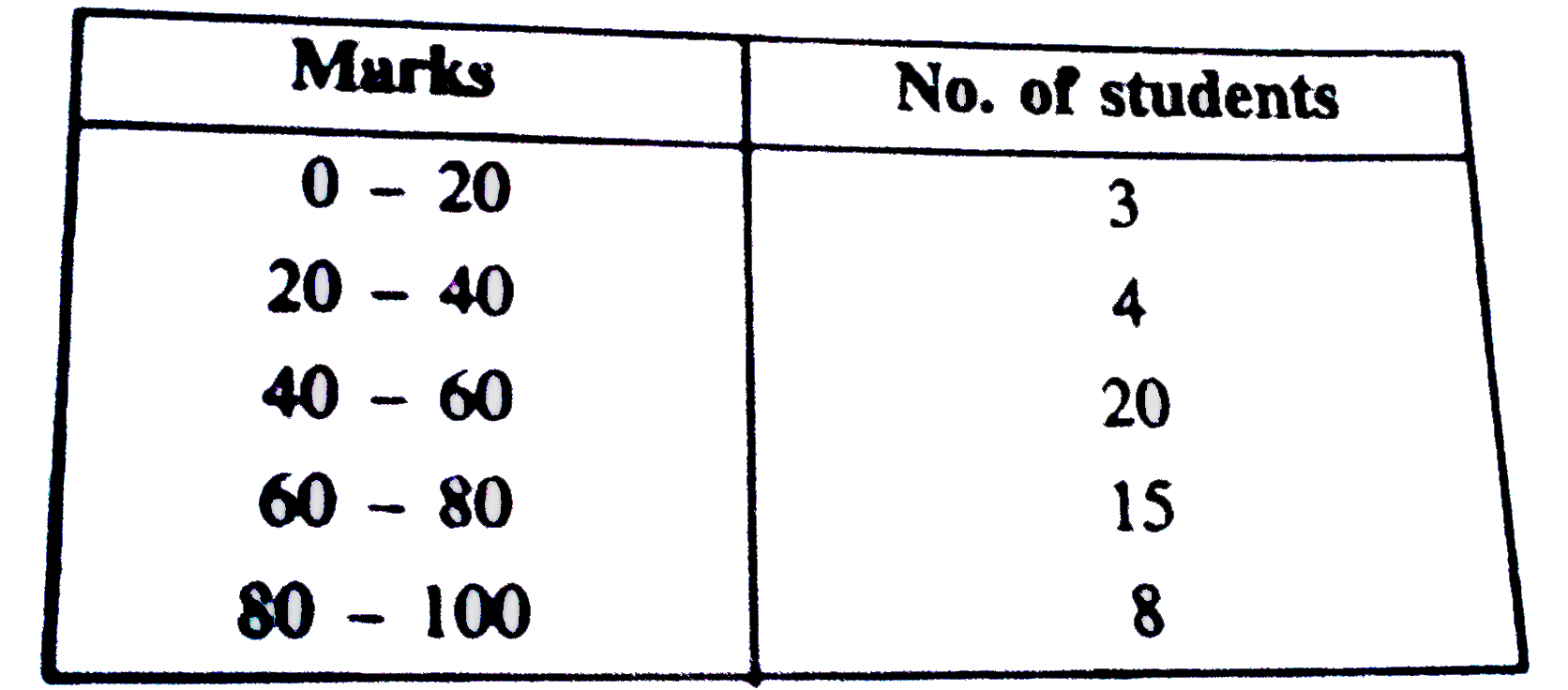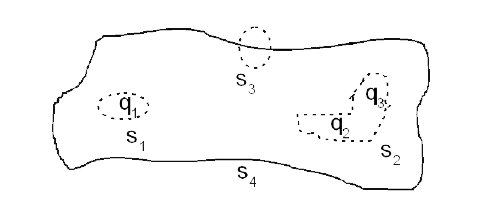
संलगनचित्र में, q1=+10μC,q2=+6μC,q3=−10μC हो तो गाऊसियन वैधुत S1,S2 व S3 से गुजरने वाला वैधुत फ्लक्स ज्ञात कीजिये!
(e0=8.86×10−12कुलोम2/न्यूटन-मीटर2)
गाउन के नियम से, किसी गाऊसियन पृष्ठ से गुजरने वाला फ्लक्स,
ϕE=qinε0
पृष्ठ S1 के लिए,
qin=q1=+10μC
ϕE1=q1ε0=10×10−68.85×10−12=1.13×106न्यूटन-मीटर2/कुलोम
पृष्ठ S2 के लिए,
qin=q1+q3=10μC−10μC=0
ϕE2=0
पृष्ठ S3 के लिए,
qin=q1+q2+q3
=10μC+6μC−10μC=+6μC
ϕE3=6×10−68.85×10−12=6.78×105न्यूटन-मीटर2/कुलोम
Topper's Solved these Questions
- BOOK - BALAJI PUBLICATIONCHAPTER - वैधुत आवेश तथा क्षेत्रEXERCISE - लघु उत्तरीय प्रश्न58videos
वैधुत आवेश तथा क्षेत्र
- BOOK - BALAJI PUBLICATIONCHAPTER - वैधुत आवेश तथा क्षेत्रEXERCISE - दीर्घ उत्तरीय प्रश्न21videos
वैधुत आवेश तथा क्षेत्र
- BOOK - BALAJI PUBLICATIONCHAPTER - विद्युत धाराEXERCISE - NCERT पाठ्य-पुस्तक के हल28videos
विद्युत धारा
- BOOK - BALAJI PUBLICATIONCHAPTER - वैधुत चुम्बकीय प्रेरण EXERCISE - अतिरिक्त अभ्यास7videos
वैधुत चुम्बकीय प्रेरण
Similar Questions
आवेश का सबसे-(i) छोटा, (ii) बड़ा मात्रक लिखिए।
06:01View Solutionवैधुत बल सम्बन्धी कुलोम का नियम लिखिए। इससे आवेश के मात्रक तथा कुलोम की परिभाषा दीजिए?
05:05View Solutionकिसी कार की संचायक बैटरी का विधुत वाहक बल 12V है । यदि बैटरी का आंतरिक प्रतिरोध () हो, तो बैटरी से ली जाने वाली अधिकतम धारा का मान क्या है ?
04:23View Solutionमान लीजिए कि प्रश्न 4 में उल्लिखत लूप स्थिर है किन्तु चुम्बकीय क्षेत्र उत्पन्न करने वाले विधुत चुम्बक में धारा का मान कम किया जाता है जिससे चुम्बकीय क्षेत्र का मान 0.3 अपने प्रारंभिक मान टेस्ला से 0.02 टेस्ला-सेकण्ड−1 की दर से घटता है । अब यदि लूप का कटा भाग जोड़ दें जिससे प्राप्त बंद लूप का प्रतिरोध 1.6Ω हो तो इस लूप में उष्मन के रूप में शक्ति ह्रास क्या है ? इस शक्ति का स्त्रोत क्या है
05:21View SolutionLet S_(k)=1+2+3+....+k and Q_(n)=(S_(2))/(S_(2)-1)*(S_(3))/(S_(3)-1)...(S_(n))/(S_(n)-1) where k,nvarepsilon N*lim_(x rarr oo)Q_(n)=
06:57View SolutionIn plate A has 100 muC charge, while plate B has 60 muC charge. a. When both switches are open, then q_(1)="_____" q_(2)="______" q_(3)="______" q_(4)="_______" b. When switch S_(1) is closed, the q_(1)="_____" , q_(2)="______" q_(3)="_______" , q_(4)="_____" c. When switch S_(1) is also closed, then q_(1)="______" q_(2)="______" q_(3)="______" ltbrlt q_(4)="_______" . .
02:37View SolutionFour capacitors C1(=1μF),C2(=2μF),C3(=3μF) and C4(=4μF) are connected in a network as shown in the diagram. The emf of the battery is E=12V and its internal resistance is negligible. The keys S1 and S2 can be independetly put on or off. Indicate the charge on the capacitors by q1,q2,q3 and q4 respectively and the potential drops across them by V1,V2,V3 and V4 respectively.

Initially key S2 is closed. Then the key S1 is now closed. Then the charges on the capacitors are.15:24View SolutionCharges q_(1) , q_(2) and q_(3) are placed on capacitors of capacitance C_(1) , C_(2) and C_(3) , respectively, arranged in series as shown. Switch S is there closed. What are the final charges q'_(1) , q'_(2) and q'_(3) on the capacitors? Given q_(1)=30muC , q_(2)=muC , q_(3)=10muC , C_(1)=10muF , C_(2)=20muF , C_(3)=30muF and epsilon=12"volt"
View SolutionTwo capacitros of capacity 6 mu F are charged to 100 V and 50 V separately and connected as shown. Now all the three switches S_(1), S_(2) and S_(3) are closed. Suppose q_(1), q_(2) and q_(3) be the magnitudes of charge flown from switches S_(1), S_(2) and S_(3) after they closed. Then
03:11View SolutionIf (I) C+O_(2)toCO_(2) , Q_(1) (II) C+(1)/(2)O_(2)toCO , Q_(2) (III) CO+(1)/(2)O_(2)toCO_(2) , Q_(3) The heats of reaction Q_(1) and Q_(2) are -12 , -10 respectively. Then Q_(3)=
02:02View SolutionCalculate Q1,Q2andQ3,
 09:18View Solution
09:18View SolutionIf q1,2,q3 are roots of the equation x3+64=0, then the value of ∣∣ ∣ ∣∣q1q2q3q2q3q1q3q1q2∣∣ ∣ ∣∣ is :-
03:12View SolutionThree charges q1=1μc,q2=2μc and q3=−3μc and four surfaces S1,S2,S3 and S4 are shown. The flux emerging through surface S2 in N−m2/C is-
 03:17View Solution
03:17View SolutionIf Q1,Q2,Q3,Q4 are the quadrants in a Cartesian plane then Q2∩Q3 is ________.
03:36View SolutionAssume the three parallel-edged plates with an area of charge of A are negligible. Charge on two external surfaces a and (A)(Q_(1)+(Q_(2)+Q_(3)))/(2) (B)(Q_(1)+Q_(2)+Q_(3))/(3) (C ) (Q_(1)-(Q_(2)+Q_(3)))/(3) (D)(Q_(1)-(Q_(2)+Q_(3)))/(2)
02:47View Solution

